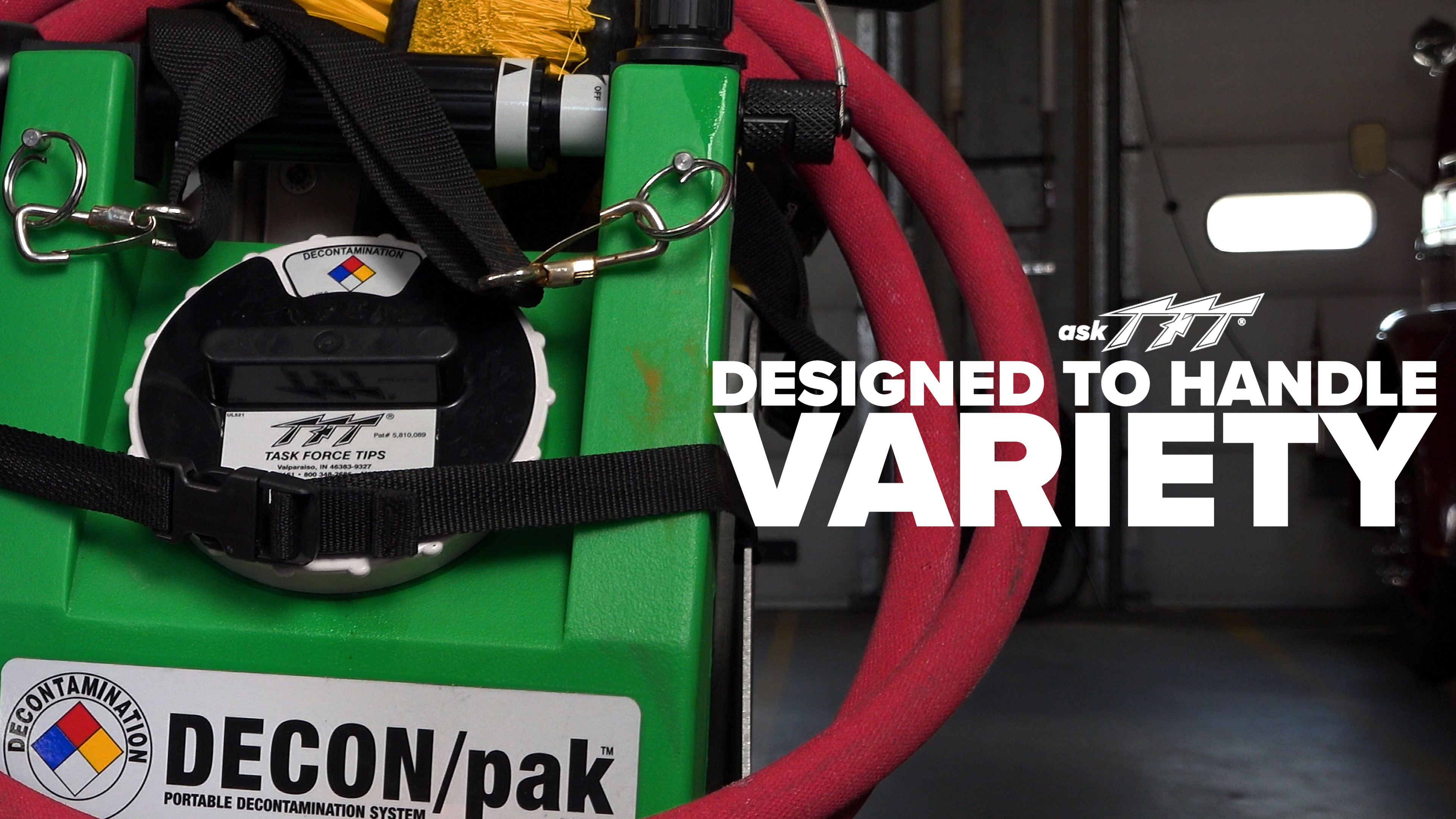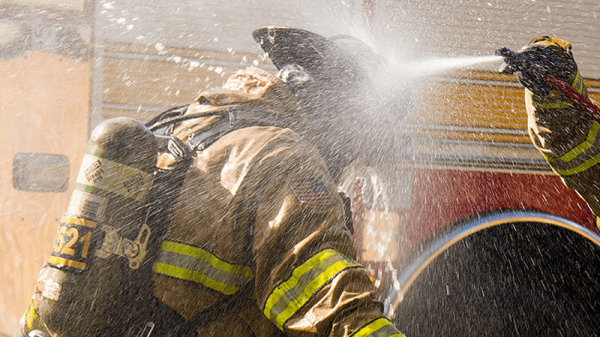Back
What Is Gross Decon?
Posted on 1st July 2024
When a fire occurs, firefighters not only battle the flames but also face threats posed by hazardous materials and contaminants.
One critical aspect of their response is gross decontamination, a process aimed at minimizing the risks associated with exposure to harmful substances.
In this article, we will dive into the world of gross decontamination in firefighting, explaining what it is and when it becomes applicable. Understanding the significance of gross decontamination is crucial for firefighters, as it is proven to reduce cancer-causing contamination on turnout gear by up to 85% when done properly.
What is Gross Decontamination?
Gross decontamination serves as the initial line of defense in the decontamination process, focusing on swiftly removing as much of the contaminants as possible from affected individuals. Doing so helps minimize the absorption of hazardous materials into the body and prevents further contamination of the surroundings.
In firefighting, gross decontamination, or field decon, typically involves using water, soap, and a brush to remove contamination from bunker gear. Some departments use dedicated decon systems and equipment that are easy to transport, set up, and use.
Where Should You Use Gross Decon?
Gross decon is typically performed at the scene of the incident or in a designated decontamination area nearby. The process involves rinsing the affected individuals or objects with water or specialized decontamination solutions to wash away the hazardous materials. The choice of decontamination method depends on the nature of the contaminants and the available resources. Water is commonly used due to its accessibility, but decontamination solutions may be employed to enhance the removal of specific substances.
The timing of gross decontamination is critical. It should occur as soon as possible after exposure to hazardous materials to prevent their further penetration into the body or transfer to other areas. Rapid initiation of gross decontamination helps minimize the health risks and potential long-term effects of the contaminants.
When is Gross Decontamination Applicable in Firefighting?
Gross decontamination is applicable in firefighting when there is a risk of exposure to hazardous materials during fire incidents. Firefighters encounter various situations where the implementation of gross decontamination becomes crucial for their safety and the well-being of victims. Here are some common scenarios in firefighting where gross decontamination is necessary:
Hazardous Material Fires:
When fires involve hazardous materials, such as flammable chemicals, toxic substances, or volatile gases, gross decontamination is essential. It allows firefighters to remove the contaminants from their gear, equipment, and exposed surfaces, preventing their further spread and reducing the risks of chemical exposure. Specialized decontamination procedures may need to be used.
Structural Fires:
In structural fires, particularly those involving older buildings or industrial complexes, there may be concerns of asbestos-containing materials, lead-based paints, or other harmful substances. Modern day products contain synthetic materials that also pose a risk. Gross decontamination helps remove potential contaminants from firefighters’ protective clothing, minimizing their exposure and the risk of long-term health effects.
Wildland Fires:
During wildland firefighting operations, firefighters can encounter hazardous materials, such as smoke particles, ash, or toxic vegetation. Gross decontamination allows for the removal of these contaminants from personal protective equipment (PPE) and exposed areas, reducing respiratory risks and potential skin irritations.
In each of these firefighting scenarios, prompt implementation of gross decontamination procedures is crucial. By removing as much of the contaminants as possible from the surfaces, equipment, and firefighters themselves, it helps minimize the risks associated with exposure to hazardous materials.
## Procedures and Techniques of Gross Decontamination in Firefighting
Implementing field decon in firefighting requires following specific procedures and using proven techniques to ensure the thorough removal of contaminants. The following steps outline the key components of gross decontamination, but you should follow the standard operating procedures (SOPs) for your department:
Choose a designated area:
Choose a specific space where gross decontamination will take place. This area should be well-ventilated and equipped with necessary resources, including a fresh water supply and decontamination solutions. Wash: Before any turnout gear is removed, wet the firefighter from head to toe, ensuring they do quarter turns so that you can adequately wet their back, sides, and front. If your system allows, this step should include the decontamination solution of your choice.
Scrub:
Using a stiff-bristled brush, scrub the gear and equipment to dislodge solid particles and ash on their gear. Rinse: Using fresh water at a safe pressure, rinse the firefighter from head to toe. Use the same quarter-turn method from step 2 to ensure full rinsing.
Gross decontamination is the first step in an effective decon strategy. Following this initial step, firefighters may need to use wipes for their skin, partake in a “shower within the hour” protocol, further wash their gear and equipment, and use air decontamination devices for the most effective results.
Training and Preparedness for Gross Decontamination in Firefighting
Successful gross decontamination requires comprehensive training and preparedness among firefighters and emergency response teams. You can ensure preparedness in multiple ways:
Decontamination Protocols:
Educate responders on the specific protocols and procedures for gross decontamination, including proper use of equipment, techniques for rinsing, and handling of contaminated materials.
Practical Exercises:
Incorporate practical training exercises that simulate realistic scenarios, allowing responders to practice gross decontamination techniques.
Interagency Collaboration:
Foster collaboration between fire departments, hazardous materials teams, and other relevant agencies to conduct joint training exercises focused on gross decontamination procedures.
It is essential to regularly review and update SOPs and training programs to keep up with evolving knowledge, technologies, and best practices in gross decontamination. As these practices change, you must inform and train your crew.
Conclusion: The Importance of Gross Decontamination in Firefighting
Gross decon or field decontamination is a vital part of firefighting operations. Contaminants and debris pose a threat to firefighter health and are proven to cause cancers and other diseases. By engaging in gross decon, firefighters take an important first step in creating a healthier work environment.
Combining field decontamination with added protocols surrounding equipment cleaning, showering, and air decontamination can further improve firefighter health outcomes.
Looking for a simple gross decontamination system?


